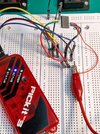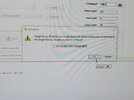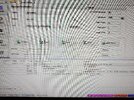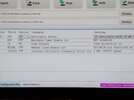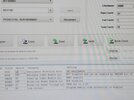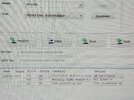Getting further into the data sheet I see that although it says max vdd is 0.3 to 7.5v it does say except for MCLR which is 13.25v and except RA4 which can go to 8.5 for some reason. so apparently it is safe to take MCLR higher than VDD but that's on the MCV18E and we are still not certain the chip I have is that one, and if I damage one of mine it writes off a £29 switch if I can't buy the chips and extract the software to program them, I'm thinking it would be foolish to try?
Fairly obviously a higher voltage is perfectly OK on MCLR, because that's how you get in programming mode
I'm somewhat bemused how the MCV18E popped up in this thread - it's just one of MANY 18 pin PIC devices (and an extremely obscure one), and if the device in question is a PIC it could be anyone of them - there's nothing specific to point towards the MCV18E. It must be the most obscure PIC series numbering there ever was - not listed at MicroChip, not listed at MicroChip Direct, not listed at Distributors, even Google finds sod all about it. As I suggested above, I can only imagine it's an alternative label for a more normal PIC. THere's nothing 'special' in the MCV81E datasheet, it's just a low spec 16F device.
I agree that it would be foolish to try, particularly as it's VERY likely read protected if it is a PIC anyway.
I was just watching a youtube video where a chap is describing the components on a circuit board and he says and they have a microcontroller. what I notice is the screen print designation is U1 which happens to be the same designation as the unknown chip on my board, so is "U" a universal designation for micro controllers in pcb layout?
Could be U, could be IC, could be anything you want - just checked on one of my boards and it's IC2. It basically depends on whoever created the component, and if the board designer just used the default reference.
It's quite common to have multiple PIC's on the same board - their low cost means it makes products cheaper and smaller, by replacing multiple IC's with just one.

